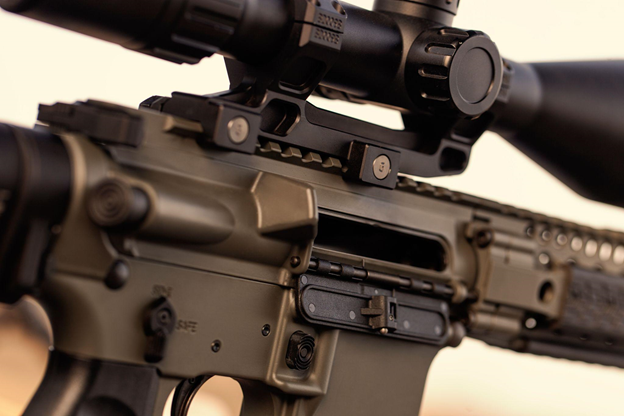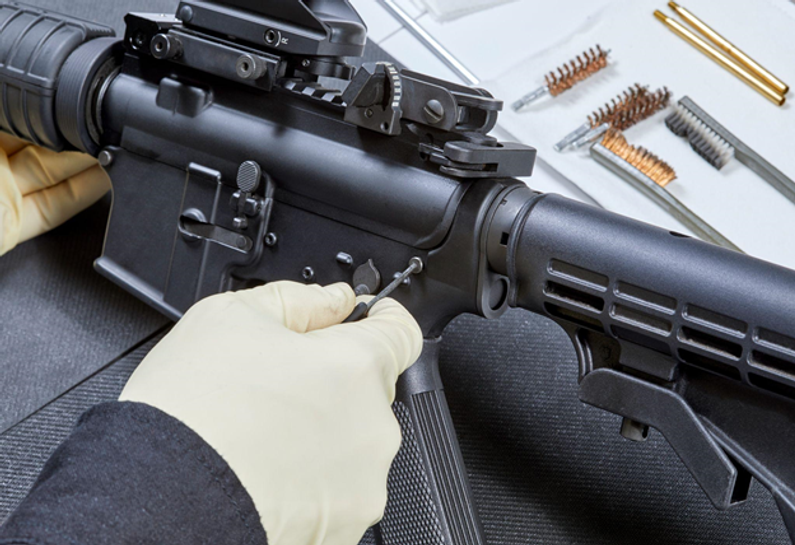Skeletonized AR15 rifles look pretty slick, with their unique lines and angles, and plenty of voids. Double down on a unique color for the anodized AR15 parts used in the build and it’ll look even cooler.
But as with all things in the world of customizing firearms, this is once more a double-edged sword. Yes, a skeletonized AR15 build will look cool, and offer other measurable advantages, but there’s always the flipside to consider.
This post will break down some of the details - here’s what you should know about skeletonized AR15 parts and builds.
Why Go Skeletonized?
It’s no secret that skeletonized AR15 rifles appeal to some buyers on aesthetic grounds alone. The same goes for shooters that accessorize their rifles or pistols with colored anodized parts. A gun with a colored part will shoot no better or worse than a standard model.
So there’s that reason. Installing skeletonized parts makes it easier to customize your rifle, which some shooters prefer.
But the main reason that some home builders are attracted to skeletonized AR15 rifles and parts is that they are much lighter than their standard counterparts. You can shave ounces, if not pounds, off of an AR15 rifle tricked out with skeletonized parts, such as a handguard or stock.
One thing you can do in concert is to install a fluted barrel. You can’t skeletonize a barrel but you can flute it, and a fluted barrel will weigh considerably less. And not only will it weigh less, it will have superior heat dissipation properties, which means it will stay cooler and therefore shoot more accurately under periods of intense fire.
On top of the fact that skeletonized AR15 rifles weigh less, there are some components that when skeletonized, offer unique advantages. One of these is the bolt carrier group.
More often referred to as a lightweight bolt carrier group, a skeletonized bolt carrier group will weigh less, but that means that there’s less mass to cycle; this can raise quite a few benefits.
One is lower recoil, as the reciprocating mass of the BCG is one of the primary determinants of felt recoil. In turn, you can then lower the buffer weights, which further reduces recoil. This has a compounded effect on both the weight of the rifle and handling as a result of reduced recoil.
A skeletonized bolt carrier group for an AR15 rifle, since it is lighter, will also be more likely to cycle faster, especially if it is treated with a modern high-lubricity finish like black nitride or nickel boron. The faster cycling time can enable faster follow-up shots, although we’re talking a matter of milliseconds here.
There’s also the potential for improved heat dissipation with certain skeletonized AR15 parts, like the handguard. If the handguard is skeletonized, there will be more open space and airflow around the barrel, enabling it to cool faster, which is another potential benefit.
All in all, beyond weight savings, which are far and away the biggest advantages of skeletonized AR15 rifle parts, these are some of the best.
Not All Sunshine and Rainbows: The Drawbacks of a Skeletonized AR15 Build
With all of this being said, there are several pointed drawbacks to skeletonized AR15 rifles. While they don’t entirely negate the potential advantages, they should absolutely be considered.
The obvious detractor here is cost. Skeletonized AR15 parts tend to be more expensive than their solid counterparts. Sometimes not by much, but sometimes they cost a lot more and only deliver a modicum in the way of weight savings.
Even if that were not the case, there is also a debate around whether or not skeletonized AR15 parts are as strong as solid alternatives. They are engineered for strength, but the case is likely that solid parts are technically stronger and therefore superior on that basis.
Most importantly, however, when you skeletonize a gun part, you necessarily dramatically increase the surface area. While this will lighten the part and potentially improve heat dissipation, it will also allow dirt and debris plenty of opportunities for ingress.
And, on that note, skeletonized AR15 parts, with their vastly expanded surface area, are much harder to keep clean than solid AR parts. This is very pointedly the case with parts like bolt carrier groups, which, if they are allowed to get (or stay) very dirty, the performance of the rifle will be directly impeded.
And so, for these reasons (and possibly others) mil-spec AR components are not skeletonized. But even that being so, there is a strong civilian market for skeletonized AR15 rifles and parts, for the reasons mentioned here.

Shop AR Parts Here
Still thinking a skeletonized AR15 build is for you? Shop our collection of skeletonized parts and assembled uppers here and let us know if you have any questions about the build - you can contact us at Sales@MCSGearup.com and we’ll be happy to help you out.

